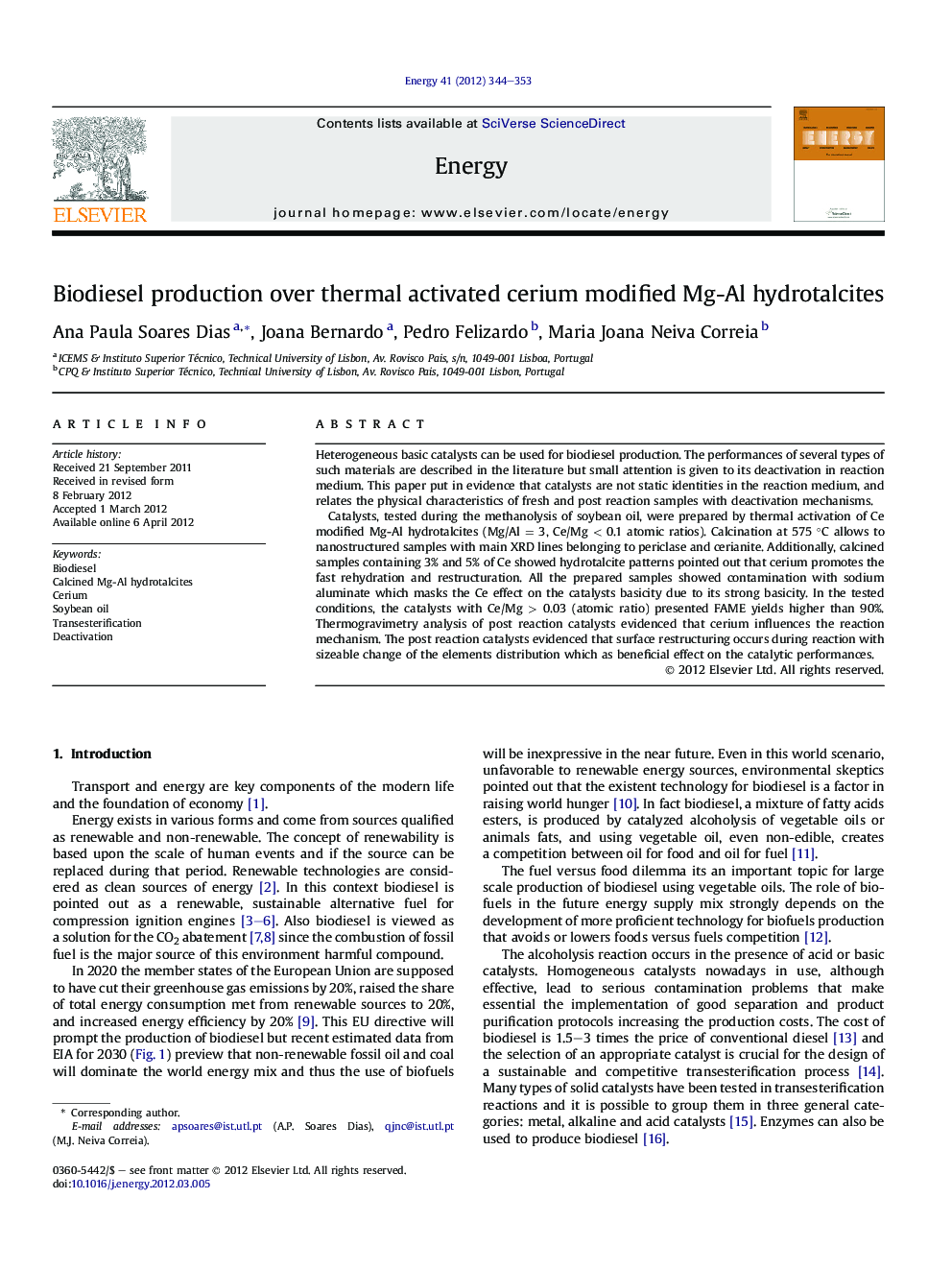| Article ID | Journal | Published Year | Pages | File Type |
|---|---|---|---|---|
| 1733508 | Energy | 2012 | 10 Pages |
Heterogeneous basic catalysts can be used for biodiesel production. The performances of several types of such materials are described in the literature but small attention is given to its deactivation in reaction medium. This paper put in evidence that catalysts are not static identities in the reaction medium, and relates the physical characteristics of fresh and post reaction samples with deactivation mechanisms.Catalysts, tested during the methanolysis of soybean oil, were prepared by thermal activation of Ce modified Mg-Al hydrotalcites (Mg/Al = 3, Ce/Mg < 0.1 atomic ratios). Calcination at 575 °C allows to nanostructured samples with main XRD lines belonging to periclase and cerianite. Additionally, calcined samples containing 3% and 5% of Ce showed hydrotalcite patterns pointed out that cerium promotes the fast rehydration and restructuration. All the prepared samples showed contamination with sodium aluminate which masks the Ce effect on the catalysts basicity due to its strong basicity. In the tested conditions, the catalysts with Ce/Mg > 0.03 (atomic ratio) presented FAME yields higher than 90%. Thermogravimetry analysis of post reaction catalysts evidenced that cerium influences the reaction mechanism. The post reaction catalysts evidenced that surface restructuring occurs during reaction with sizeable change of the elements distribution which as beneficial effect on the catalytic performances.
► Basic heterogeneous catalysts have been tested during the methanolysis of soybean oil to produces biodiesel (FAME). ► Catalysts were prepared by thermal activation of Ce modified Mg-Al hydrotalcites. ► Samples prepared with Ce/Mg < 0.05 (molar ratio) showed hydrotalcite XRD patterns even after calcination. ► Ce promotes fast rehydration/restructuration of the hydrotalcite having a beneficial effect on the catalytic performances.
